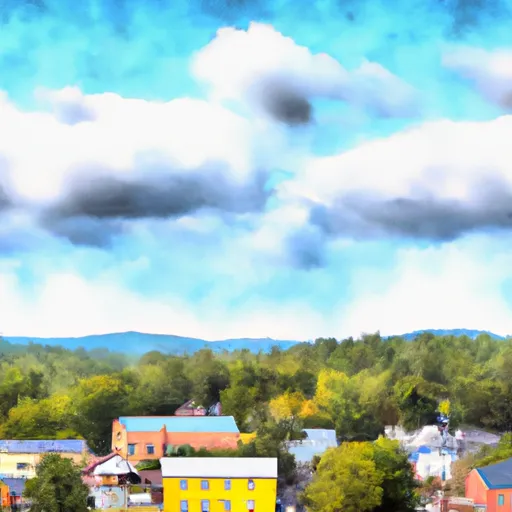-
 Snoflo Premium
Snoflo Premium
Get unlimited access to all our content
With no Ad interruptions! - Start Your Free Trial Login with existing account
Jefferson
Eden Index
Climate
8.2
•
Recreation
2.5
•
Community
0.9
•
Safeguard
4.4/10

Jefferson, Maine is a picturesque town located in Lincoln County, nestled in the heart of the state. The climate in Jefferson is typically New England-like, with warm summers and cold winters. Average temperatures range from the mid-20s (°F) in winter to the mid-70s in summer, with occasional heatwaves and cold snaps. The region experiences moderate rainfall and snowfall, creating beautiful scenery year-round.
Hydrologically, Jefferson is blessed with numerous lakes, ponds, and streams. Damariscotta Lake is the largest freshwater body, offering opportunities for swimming, boating, and fishing. The pristine waters are home to various fish species, including bass and trout, attracting anglers from far and wide.
Outdoor enthusiasts will find plenty to enjoy in Jefferson. The area is known for its hiking trails, such as the popular Hidden Valley Nature Center, offering picturesque landscapes and wildlife sightings. Jefferson's rolling hills and stunning vistas also make it ideal for cycling and birdwatching. In winter, residents and visitors can partake in activities like cross-country skiing and snowmobiling on the local trails.
In conclusion, Jefferson, Maine offers a delightful climate, abundant hydrology constituents, and diverse outdoor recreation opportunities, making it a haven for nature lovers and those seeking an active lifestyle.
What is the Eden Index?
The Snoflo Eden Index serves as a comprehensive rating system for regions, evaluating their desirability through a holistic assessment of climate health, outdoor recreation opportunities, and natural disaster risk, acknowledging the profound impact of these factors on livability and well-being.
Climate Health Indicator (CHI): 8.2
Jefferson receives approximately
1201mm of rain per year,
with humidity levels near 76%
and air temperatures averaging around
8°C.
Jefferson has a plant hardyness factor of
5, meaning
plants and agriculture in this region thrive during a short period during spring and early summer. Most
plants will die off during the colder winter months.
By considering the ideal temperature range, reliable water supplies, clean air, and stable seasonal rain or snowpacks, the Climate Health Indicator (CHI) underscores the significance of a healthy climate as the foundation for quality living.
A healthy climate is paramount for ensuring a high quality of life and livability in a region, fostering both physical well-being and environmental harmony. This can be characterized by ideal temperatures, reliable access to water supplies, clean air, and consistent seasonal rain or snowpacks.
Weather Forecast
Streamflow Conditions
Maine Coastal
Area Rivers
Maine Coastal
Snowpack Depths
Maine Coastal
Reservoir Storage Capacity
Maine Coastal
Groundwater Levels
Recreational Opportunity Index (ROI): 2.5
The Recreational Opportunity Index (ROI) recognizes the value of outdoor recreational options, such as parks, hiking trails, camping sites, and fishing spots, while acknowledging that climate plays a pivotal role in ensuring the comfort and consistency of these experiences.
Access to outdoor recreational opportunities, encompassing activities such as parks, hiking, camping, and fishing, is crucial for overall well-being, and the climate plays a pivotal role in enabling and enhancing these experiences, ensuring that individuals can engage in nature-based activities comfortably and consistently.
Camping Areas
| Campground | Campsites | Reservations | Toilets | Showers | Elevation |
|---|---|---|---|---|---|
| Lake St. George State Park | 40 | 535 ft |
Nearby Ski Areas
Catastrophe Safeguard Index (CSI):
The Catastrophe Safeguard Index (CSI) recognizes that natural disaster risk, encompassing floods, fires, hurricanes, and tornadoes, can drastically affect safety and the overall appeal of an area.
The level of natural disaster risk in a region significantly affects safety and the overall livability, with climate change amplifying these risks by potentially increasing the frequency and intensity of events like floods, fires, hurricanes, and tornadoes, thereby posing substantial challenges to community resilience and well-being.
Community Resilience Indicator (CRI): 0.9
The Community Resilience Indicator (CRI) recognizes that education, healthcare, and socioeconomics are crucial to the well-being of a region. The CRI acknowledges the profound impact of these elements on residents' overall quality of life. By evaluating educational resources, healthcare accessibility, and economic inclusivity, the index captures the essential aspects that contribute to a thriving community, fostering resident satisfaction, equity, and social cohesion.

